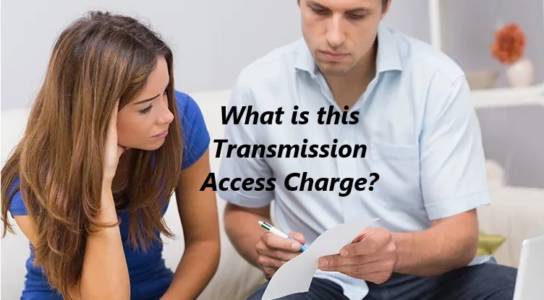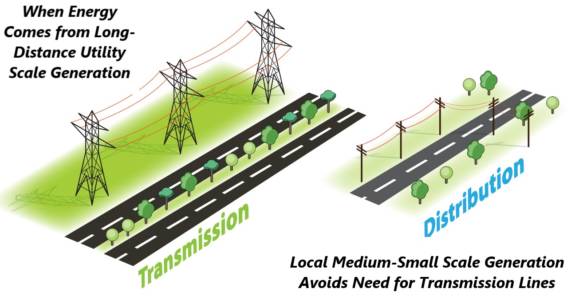When one of several California Legislators makes the decision to author this bill, they might choose to call it the Ratepayer Electric Purchase Protection Act or True Cost Electric Pricing Act. It can be called the Ratepayer Electric Procurement Protection Act “REPPA”.
You may be getting the idea that there may be a charge on your electricity bills that shouldn’t be there. This proposed legislation is a necessary reform directing the California Public Utilities Commission to fix the discrepancy. This fix will reduce rates and increase local green energy and the development of resilience in case of black-outs and ensure that ratepayers living in the service areas of So Cal Edison, PG&E and San Diego Gas and Electric no longer pay extra charges not added to bills by other utilities. It can also be called a Ratepayer Equity Act.
SUMMARY
Fairness requires that shipping and handling costs are a part of the analysis and decision-making about the amount charged to all electricity ratepayers.
Problem: Long distance electric delivery through transmission now costs as much as generation. Power providers (IOUs and CCAs) do not pay these delivery fees and therefore do not consider them in power purchases, which drives up costs for ratepayers.
Transmission costs are also being charged inconsistently, with many but not all customers charged transmission delivery fees regardless of how much of the power is delivered through the CAISO system.
 Solution: All customers should be charged the same way for transmission and that should reflect how much their provider is using the transmission system. This bill simply designates the CPUC to coordinate that with CAISO and any other relevant agencies.
Solution: All customers should be charged the same way for transmission and that should reflect how much their provider is using the transmission system. This bill simply designates the CPUC to coordinate that with CAISO and any other relevant agencies.
The California Independent System Operator (CAISO) operates the electricity transmission grid and assesses transmission access charges (TACs) as usage fees to pay for the transmission system. For some customers these fees properly only apply to energy delivered from the transmission system. However, in much of California, TACs are unfairly applied to energy from local distributed generation (DG) resources, which are located close to homes and businesses and therefore do not use the transmission grid to deliver energy. DG resources, which are primarily local renewables, actually reduce California’s transmission costs by decreasing the need for new transmission infrastructure. Because of the misapplied TAC charge, DG projects effectively subsidize remote energy sources with higher cost and environmental impacts. This subsidy inflates the demand for new transmission facilities, which means ratepayers pay for much more transmission infrastructure than they need.
This bill establishes as state policy that all electricity procurement conducted based on cost should be based on the full cost consequences to ratepayers, including the costs of electrical generation, transmission, and distribution. The bill would require the PUC, in consultation with all relevant stakeholders, including the ISO, to convene a stakeholder process to develop modifications of the tariffs governing transmission access charges, wheeling access charges, or retail rate structures as necessary to implement the state policies and to ensure the tariffs conform to specified standards.
BACKGROUND
Utilities pay TACs to the CAISO for use of the transmission grid, which consists of high voltage power lines that transport electricity over long distances. These charges cover the cost of construction, investment amortization, return-on-equity, operations, and maintenance of the transmission lines and infrastructure. Utilities then pass these charges on to ratepayers. TACs increase roughly 7-9% each year due to new transmission investments, and make up an increasing portion of the cost of energy in California. For example, in the Pacific Gas & Electric service territory, TACs add nearly 3¢/kilowatt-hour to the cost of electricity, increasing the wholesale price of energy by 30-50%.
In most parts of California, utilities pay TACs on all energy that they sell to customers. Centralized generation requires expensive transmission to deliver energy to consumers whereas distributed generation resources provide energy to nearby customers without using transmission and make existing transmission capacity available for other projects. Nonetheless, energy delivered from DG projects is still subject to TACs.
DG projects allow existing transmission resources to meet California’s energy needs for longer by freeing up transmission capacity and decreasing the demand for new transmission investment. This saves ratepayers money in the long run by reducing transmission access charges. Detailed cost optimization analysis of local and remote resources needed to meet
California’s 2050 clean energy targets will realize $120 Billion in ratepayers savings compared to current practices.
Subjecting local energy to TACs forces utilities and CCAs contracting local projects to subsidize larger, remote, centralized energy projects that create additional transmission costs and land impacts. This cost shift not only ignores the value of the avoided transmission that DG provides to ratepayers and the grid, but it hinders DG’s ability to compete with centralized generation for renewable energy projects, including projects that will help California meet its targets for emissions reduction, reliability and local resilience.
In contrast, most municipal utilities are already correctly assessed TACs only on energy they pull from the transmission grid – as metered at substations located between the transmission and distribution grids. In these utility service territories, local generation that is not delivered over transmission is not subject to TACs, and the market signals for renewable energy are not distorted to favor remote centralized generation.
In the rest of California, the TAC methodology disadvantages DG projects that seek to sell power to utilities. Most California utilities buy power on the Least Cost methodology, where an energy project is evaluated only by the cost to generate electricity, ignoring delivery costs. Because TACs are assessed regardless of whether the energy actually uses the transmission system, energy from DG projects appears to have the same cost of delivery as centralized projects that need transmission capacity to deliver energy. This ignores the transmission savings that DG projects offer. True pricing should consider the total delivered cost of energy and recognize that local renewables avoid using the transmission system.
As utilities make procurement plans to meet the 50% Renewable Portfolio Standard by 2030, it is critical that the market signals fairly compare the benefits of local distributed generation against centralized generation projects. To the extent that demand can be reduced for additional transmission facilities, investment in new facilities will not be needed, and ratepayers will save tens of billions of dollars.
CAISO has concluded that it cannot act in isolation to effectively remedy the procurement practices which are beyond its jurisdiction and coordinated regulatory action is needed to address this issue.
SOLUTION IN SUMMARY
The bill simply directs the PUC, in consultation with all relevant stakeholders, including the ISO, to convene a stakeholder process to develop modifications of the tariffs governing transmission access charges, wheeling access charges, or retail rate structures as necessary to implement the state policies and to ensure the tariffs conform to specified standards, including consistent application to all load serving entities.


